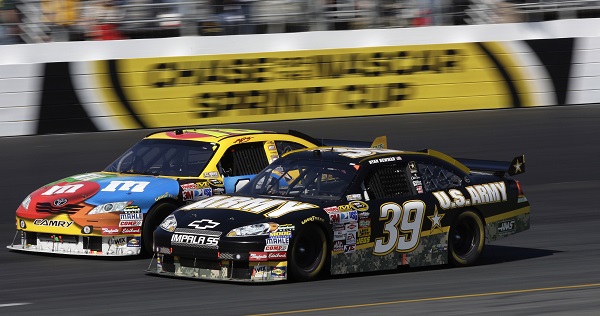
When I started college, and someone asked where I was from, I would always say Hampton. If they recognized the place at all, it was because of Atlanta International Raceway, now known as Atlanta Motor Speedway. At the cost of $1.8 million, it opened in July of 1960, a tad over a week after I was born. Some would say the track wasn’t ready for that first race. The story is that red Georgia mud was everywhere, and the only infield restroom was a 3-hole outhouse. They did get that first race in, though. Fireball Roberts won it in a Pontiac.
Things got only slightly better over my childhood years. The track went bankrupt in the early 1970s. Of course, as a child, I was oblivious to that. All I knew was we could hear the roar from the engines from our house on race day. I believe our neighbor, Harold Wesley, had something to do with the track and got us in there a couple of times. I remember being at the top of the track on one end, and the sound as the cars came around was deafening. I also remember thinking it would be a challenge climbing up that banking.
When my boys were young, maybe 4 and 6, we went to the track on the Wednesday or Thursday before race day. I remember it was windy and cold. There was almost no one there besides the drivers and the crews, so we could walk around pretty much anywhere we wanted. We were right up against the fence, and there were only a few cars on the track at any one time. But when those cars came around, you could feel the ground move under your feet. I saw a few of the NASCAR stars milling around, but James and Mark were not impressed. I was more intrigued than they were by the whole experience. They probably don’t even remember it.
The only time I’ve been inside the track was when they had a running race there. It was a 5-mile race that started inside the track where we made one loop, then a loop outside the track, and one last lap inside the track. We ran down on the apron, of course. There’s no way you could run on the track itself with the banking.
As an adult, the thing I remember the most is the traffic on race weekends, particularly on Sundays after the race. Once the race was over, cars would back all the way up to our house and beyond. If you had asked me as a child, I would have told you it was unimaginable to me there would ever be a scenario where cars would back up that far on Jonesboro Road. Today it happens almost every day. If you believe the hype, Atlanta Motor Speedway has an economic impact of $250 million, employing nearly 3,000 people during events season. I suppose a little extra traffic is a small price to pay for that.